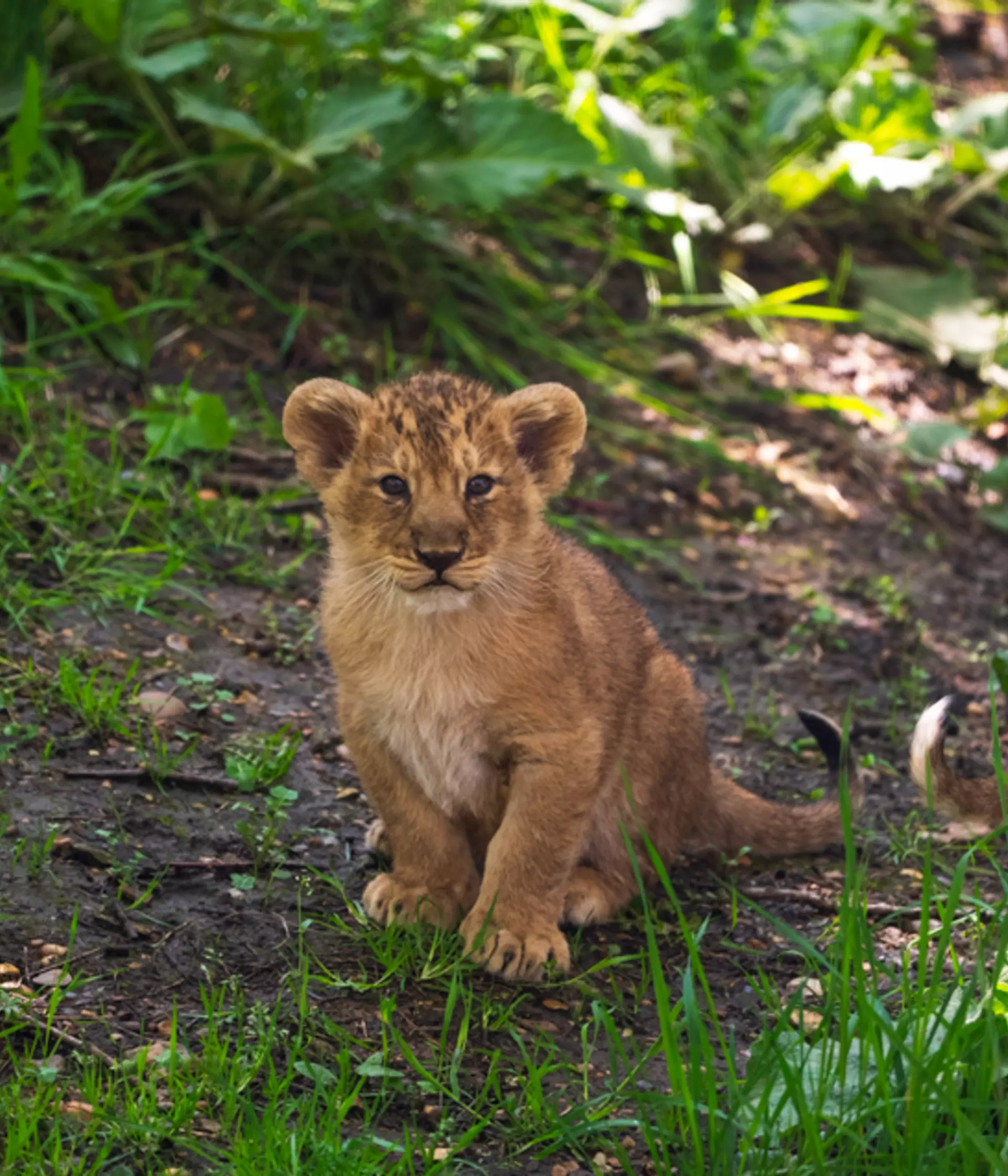Lion cubs at the Zoo
Our lioness Arya gave birth to three cubs in Spring 2024, and they took their first steps outside this May. The two boys and one girl will play a big role in the conservation for their species, and are helping us inspire the next generation of conservationists to protect this rare subspecies.
Only 600 to 700 Asiatic lions remain in the wild and they are found in just a single area, the Gir Forest in Gujarat, India, which makes them especially vulnerable to a disease outbreak or natural disaster.
This means our cubs are a hugely important addition to the international conservation breeding programme for Asiatic lions, and they will help us inspire millions of people to protect wildlife around the world.
Asiatic lion facts
- There are only several hundred Asiatic lions in the wild, and they only live in the Gir Forest, India, in an area that is smaller than Greater London.
- Asian lions are slightly smaller than African lions. Unlike African lions, the males do not tend to live with the females of their pride unless they’re mating or have a large kill.
- Asian lions used to range from Turkey, across Asia, to eastern India, but the rise of firearms across the world meant that they were hunted to near-extinction for sport.
- The male Asiatic lion has a relatively short, sparse and darker mane compared to the fuller mane of the African lion. As a result, the male Asiatic lion's ears tend to remain visible at all times.
- The most distinguishing characteristic of the Asiatic lion is the longitudinal fold of skin that runs along its belly. This is absent in African lions.
- Today, the remaining wild lions are vulnerable to disease, disaster and potential poaching, and have to live alongside a growing human population that also needs the land for cattle and crops.
What lions will I see at London Zoo?
London Zoo's Land of the Lions is home to five Asiatic lions, Bhanu and Arya and their three cubs who were born in Spring 2024.
The cubs took their first steps outside on 7 May 2024, so keep your eyes peeled for them on your next visit!
Matched as part of the international breeding programme for endangered species, coordinated by EAZA’s (European Association of Zoos and Aquaria) big cat specialists and supported by Liontrust, the hope is that the pair will breed in future to help Asiatic lion conservation work.
What's the difference between Asiatic lions and African lions?
One of the largest of the cat family, Asiatic lions vary in colour from black and dark brown to sandy and grey. Adult male Asiatic lions weigh around 175kg, while females weigh around 115kg. Unlike other species of lion, the majority of their mane growth appears around their cheeks and jaw, meaning that their ears are always visible. Another unique feature to the Asiatic lion is the fold of skin that runs along their underside.
Where do Asiatic lions live?
Another key difference between Asiatic lions and African lions is their habitat. The Asiatic lions' last remaining stronghold is in the Gir Forest and surrounding area in Gujuart, India.
What do Asiatic lions eat?
Asiatic lions' diet is made up of both large and small mammal prey such as deer, wild boar and antelope. They have also been known to feed on domestic cattle.
Restoring lions in the wild
Asiatic lion conservation
There are approximately 600 Asiatic lions left in their last remaining natural habitat. Through ZSL we've built a legacy to protect the lions of the Gir Forest.
What threats do Asiatic lions face in the wild?
An Endangered species, wild Asiatic lions are today found in just one small area of Gujarat, India, where approximately 600 remain in a forest the size of London. Asiatic lions are particularly vulnerable because they live in one concentrated area and could be dramatically effected by unpredicted events such as a large forest fire. Poachers also pose a threat for these majestic creatures.
How is ZSL working to protect Asiatic lions?
Corporate partners such as Liontrust enable ZSL to care for Asiatic lions like Arya and Bhanu, and support partners in India to safeguard theses big cats in their last remaining wild habitat, the Gir Forest. Learn more about our conservation work to protect Asiatic lions.
Love lions? From soft toys to adoption packs, find the perfect present in our online shop. Every purchases supports ZSL's vital science and conservation work.
